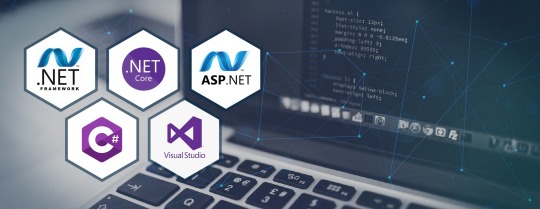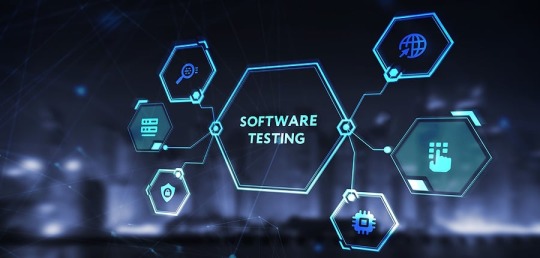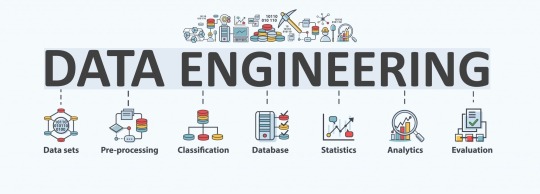#foundations of API development
Explore tagged Tumblr posts
Text
Decoding the Web: The Power and Progress of API in Web Development
Among the various technologies used in web development, Application Programming Interfaces (APIs) are a hidden gem that makes a big difference in the field. APIs are the bridge that connects digital variety and smooth user experiences. This blog post aims to break down the complicated network of API development and examine its influence, growth, and significant impact on the digital world.
#invisible thread of API development#foundations of API development#API development services#HubSpot API#HubSpot API developer#API’s impact on web development#API development businesses in India#API development companies are based in the United States#clickaims
0 notes
Text
Citations: Can Anthropic’s New Feature Solve AI’s Trust Problem?
New Post has been published on https://thedigitalinsider.com/citations-can-anthropics-new-feature-solve-ais-trust-problem/
Citations: Can Anthropic’s New Feature Solve AI’s Trust Problem?


AI verification has been a serious issue for a while now. While large language models (LLMs) have advanced at an incredible pace, the challenge of proving their accuracy has remained unsolved.
Anthropic is trying to solve this problem, and out of all of the big AI companies, I think they have the best shot.
The company has released Citations, a new API feature for its Claude models that changes how the AI systems verify their responses. This tech automatically breaks down source documents into digestible chunks and links every AI-generated statement back to its original source – similar to how academic papers cite their references.
Citations is attempting to solve one of AI’s most persistent challenges: proving that generated content is accurate and trustworthy. Rather than requiring complex prompt engineering or manual verification, the system automatically processes documents and provides sentence-level source verification for every claim it makes.
The data shows promising results: a 15% improvement in citation accuracy compared to traditional methods.
Why This Matters Right Now
AI trust has become the critical barrier to enterprise adoption (as well as individual adoption). As organizations move beyond experimental AI use into core operations, the inability to verify AI outputs efficiently has created a significant bottleneck.
The current verification systems reveal a clear problem: organizations are forced to choose between speed and accuracy. Manual verification processes do not scale, while unverified AI outputs carry too much risk. This challenge is particularly acute in regulated industries where accuracy is not just preferred – it is required.
The timing of Citations arrives at a crucial moment in AI development. As language models become more sophisticated, the need for built-in verification has grown proportionally. We need to build systems that can be deployed confidently in professional environments where accuracy is non-negotiable.
Breaking Down the Technical Architecture
The magic of Citations lies in its document processing approach. Citations is not like other traditional AI systems. These often treat documents as simple text blocks. With Citations, the tool breaks down source materials into what Anthropic calls “chunks.” These can be individual sentences or user-defined sections, which created a granular foundation for verification.
Here is the technical breakdown:
Document Processing & Handling
Citations processes documents differently based on their format. For text files, there is essentially no limit beyond the standard 200,000 token cap for total requests. This includes your context, prompts, and the documents themselves.
PDF handling is more complex. The system processes PDFs visually, not just as text, leading to some key constraints:
32MB file size limit
Maximum 100 pages per document
Each page consumes 1,500-3,000 tokens
Token Management
Now turning to the practical side of these limits. When you are working with Citations, you need to consider your token budget carefully. Here is how it breaks down:
For standard text:
Full request limit: 200,000 tokens
Includes: Context + prompts + documents
No separate charge for citation outputs
For PDFs:
Higher token consumption per page
Visual processing overhead
More complex token calculation needed
Citations vs RAG: Key Differences
Citations is not a Retrieval Augmented Generation (RAG) system – and this distinction matters. While RAG systems focus on finding relevant information from a knowledge base, Citations works on information you have already selected.
Think of it this way: RAG decides what information to use, while Citations ensures that information is used accurately. This means:
RAG: Handles information retrieval
Citations: Manages information verification
Combined potential: Both systems can work together
This architecture choice means Citations excels at accuracy within provided contexts, while leaving retrieval strategies to complementary systems.
Integration Pathways & Performance
The setup is straightforward: Citations runs through Anthropic’s standard API, which means if you are already using Claude, you are halfway there. The system integrates directly with the Messages API, eliminating the need for separate file storage or complex infrastructure changes.
The pricing structure follows Anthropic’s token-based model with a key advantage: while you pay for input tokens from source documents, there is no extra charge for the citation outputs themselves. This creates a predictable cost structure that scales with usage.
Performance metrics tell a compelling story:
15% improvement in overall citation accuracy
Complete elimination of source hallucinations (from 10% occurrence to zero)
Sentence-level verification for every claim
Organizations (and individuals) using unverified AI systems are finding themselves at a disadvantage, especially in regulated industries or high-stakes environments where accuracy is crucial.
Looking ahead, we are likely to see:
Integration of Citations-like features becoming standard
Evolution of verification systems beyond text to other media
Development of industry-specific verification standards
The entire industry really needs to rethink AI trustworthiness and verification. Users need to get to a point where they can verify every claim with ease.
#000#adoption#ai#AI development#AI systems#amp#anthropic#API#approach#architecture#Artificial Intelligence#barrier#challenge#claude#Companies#content#data#development#engineering#enterprise#experimental#Features#file storage#focus#Foundation#Full#hallucinations#how#Industries#Industry
0 notes
Text
the great reddit API meltdown of '23, or: this was always bound to happen
there's a lot of press about what's going on with reddit right now (app shutdowns, subreddit blackouts, the CEO continually putting his foot in his mouth), but I haven't seen as much stuff talking about how reddit got into this situation to begin with. so as a certified non-expert and Context Enjoyer I thought it might be helpful to lay things out as I understand them—a high-level view, surveying the whole landscape—in the wonderful world of startups, IPOs, and extremely angry users.
disclaimer that I am not a founder or VC (lmao), have yet to work at a company with a successful IPO, and am not a reddit employee or third-party reddit developer or even a subreddit moderator. I do work at a startup, know my way around an API or two, and have spent twelve regrettable years on reddit itself. which is to say that I make no promises of infallibility, but I hope you'll at least find all this interesting.
profit now or profit later
before you can really get into reddit as reddit, it helps to know a bit about startups (of which reddit is one). and before I launch into that, let me share my Three Types Of Websites framework, which is basically just a mental model about financial incentives that's helped me contextualize some of this stuff.
(1) website/software that does not exist to make money: relatively rare, for a variety of reasons, among them that it costs money to build and maintain a website in the first place. wikipedia is the evergreen example, although even wikipedia's been subject to criticism for how the wikimedia foundation pays out its employees and all that fun nonprofit stuff. what's important here is that even when making money is not the goal, money itself is still a factor, whether it's solicited via donations or it's just one guy paying out of pocket to host a hobby site. but websites in this category do, generally, offer free, no-strings-attached experiences to their users.
(I do want push back against the retrospective nostalgia of "everything on the internet used to be this way" because I don't think that was ever really true—look at AOL, the dotcom boom, the rise of banner ads. I distinctly remember that neopets had multiple corporate sponsors, including a cookie crisp-themed flash game. yahoo bought geocities for $3.6 billion; money's always been trading hands, obvious or not. it's indisputable that the internet is simply different now than it was ten or twenty years ago, and that monetization models themselves have largely changed as well (I have thoughts about this as it relates to web 1.0 vs web 2.0 and their associated costs/scale/etc.), but I think the only time people weren't trying to squeeze the internet for all the dimes it can offer was when the internet was first conceived as a tool for national defense.)
(2) website/software that exists to make money now: the type that requires the least explanation. mostly non-startup apps and services, including any random ecommerce storefront, mobile apps that cost three bucks to download, an MMO with a recurring subscription, or even a news website that runs banner ads and/or offers paid subscriptions. in most (but not all) cases, the "make money now" part is obvious, so these things don't feel free to us as users, even to the extent that they might have watered-down free versions or limited access free trials. no one's shocked when WoW offers another paid expansion packs because WoW's been around for two decades and has explicitly been trying to make money that whole time.
(3) website/software that exists to make money later: this is the fun one, and more common than you'd think. "make money later" is more or less the entire startup business model—I'll get into that in the next section—and is deployed with the expectation that you will make money at some point, but not always by means as obvious as "selling WoW expansions for forty bucks a pop."
companies in this category tend to have two closely entwined characteristics: they prioritize growth above all else, regardless of whether this growth is profitable in any way (now, or sometimes, ever), and they do this by offering users really cool and awesome shit at little to no cost (or, if not for free, then at least at a significant loss to the company).
so from a user perspective, these things either seem free or far cheaper than their competitors. but of course websites and software and apps and [blank]-as-a-service tools cost money to build and maintain, and that money has to come from somewhere, and the people supplying that money, generally, expect to get it back...
just not immediately.
startups, VCs, IPOs, and you
here's the extremely condensed "did NOT go to harvard business school" version of how a startup works:
(1) you have a cool idea.
(2) you convince some venture capitalists (also known as VCs) that your idea is cool. if they see the potential in what you're pitching, they'll give you money in exchange for partial ownership of your company—which means that if/when the company starts trading its stock publicly, these investors will own X numbers of shares that they can sell at any time. in other words, you get free money now (and you'll likely seek multiple "rounds" of investors over the years to sustain your company), but with the explicit expectations that these investors will get their payoff later, assuming you don't crash and burn before that happens.
during this phase, you want to do anything in your power to make your company appealing to investors so you can attract more of them and raise funds as needed. because you are definitely not bringing in the necessary revenue to offset operating costs by yourself.
it's also worth nothing that this is less about projecting the long-term profitability of your company than it's about its perceived profitability—i.e., VCs want to put their money behind a company that other people will also have confidence in, because that's what makes stock valuable, and VCs are in it for stock prices.
(3) there are two non-exclusive win conditions for your startup: you can get acquired, and you can have an IPO (also referred to as "going public"). these are often called "exit scenarios" and they benefit VCs and founders, as well as some employees. it's also possible for a company to get acquired, possibly even more than once, and then later go public.
acquisition: sell the whole damn thing to someone else. there are a million ways this can happen, some better than others, but in many cases this means anyone with ownership of the company (which includes both investors and employees who hold stock options) get their stock bought out by the acquiring company and end up with cash in hand. in varying amounts, of course. sometimes the founders walk away, sometimes the employees get laid off, but not always.
IPO: short for "initial public offering," this is when the company starts trading its stocks publicly, which means anyone who wants to can start buying that company's stock, which really means that VCs (and employees with stock options) can turn that hypothetical money into real money by selling their company stock to interested buyers.
drawing from that, companies don't go for an IPO until they think their stock will actually be worth something (or else what's the point?)—specifically, worth more than the amount of money that investors poured into it. The Powers That Be will speculate about a company's IPO potential way ahead of time, which is where you'll hear stuff about companies who have an estimated IPO evaluation of (to pull a completely random example) $10B. actually I lied, that was not a random example, that was reddit's valuation back in 2021 lol. but a valuation is basically just "how much will people be interested in our stock?"
as such, in the time leading up to an IPO, it's really really important to do everything you can to make your company seem like a good investment (which is how you get stock prices up), usually by making the company's numbers look good. but! if you plan on cashing out, the long-term effects of your decisions aren't top of mind here. remember, the industry lingo is "exit scenario."
if all of this seems like a good short-term strategy for companies and their VCs, but an unsustainable model for anyone who's buying those stocks during the IPO, that's because it often is.
also worth noting that it's possible for a company to be technically unprofitable as a business (meaning their costs outstrip their revenue) and still trade enormously well on the stock market; uber is the perennial example of this. to the people who make money solely off of buying and selling stock, it literally does not matter that the actual rideshare model isn't netting any income—people think the stock is valuable, so it's valuable.
this is also why, for example, elon musk is richer than god: if he were only the CEO of tesla, the money he'd make from selling mediocre cars would be (comparatively, lol) minimal. but he's also one of tesla's angel investors, which means he holds a shitload of tesla stock, and tesla's stock has performed well since their IPO a decade ago (despite recent dips)—even if tesla itself has never been a huge moneymaker, public faith in the company's eventual success has kept them trading at high levels. granted, this also means most of musk's wealth is hypothetical and not liquid; if TSLA dropped to nothing, so would the value of all the stock he holds (and his net work with it).
what's an API, anyway?
to move in an entirely different direction: we can't get into reddit's API debacle without understanding what an API itself is.
an API (short for "application programming interface," not that it really matters) is a series of code instructions that independent developers can use to plug their shit into someone else's shit. like a series of tin cans on strings between two kids' treehouses, but for sending and receiving data.
APIs work by yoinking data directly from a company's servers instead of displaying anything visually to users. so I could use reddit's API to build my own app that takes the day's top r/AITA post and transcribes it into pig latin: my app is a bunch of lines of code, and some of those lines of code fetch data from reddit (and then transcribe that data into pig latin), and then my app displays the content to anyone who wants to see it, not reddit itself. as far as reddit is concerned, no additional human beings laid eyeballs on that r/AITA post, and reddit never had a chance to serve ads alongside the pig-latinized content in my app. (put a pin in this part—it'll be relevant later.)
but at its core, an API is really a type of protocol, which encompasses a broad category of formats and business models and so on. some APIs are completely free to use, like how anyone can build a discord bot (but you still have to host it yourself). some companies offer free APIs to third-party developers can build their own plugins, and then the company and the third-party dev split the profit on those plugins. some APIs have a free tier for hobbyists and a paid tier for big professional projects (like every weather API ever, lol). some APIs are strictly paid services because the API itself is the company's core offering.
reddit's financial foundations
okay thanks for sticking with me. I promise we're almost ready to be almost ready to talk about the current backlash.
reddit has always been a startup's startup from day one: its founders created the site after attending a startup incubator (which is basically a summer camp run by VCs) with the successful goal of creating a financially successful site. backed by that delicious y combinator money, reddit got acquired by conde nast only a year or two after its creation, which netted its founders a couple million each. this was back in like, 2006 by the way. in the time since that acquisition, reddit's gone through a bunch of additional funding rounds, including from big-name investors like a16z, peter thiel (yes, that guy), sam altman (yes, also that guy), sequoia, fidelity, and tencent. crunchbase says that they've raised a total of $1.3B in investor backing.
in all this time, reddit has never been a public company, or, strictly speaking, profitable.
APIs and third-party apps
reddit has offered free API access for basically as long as it's had a public API—remember, as a "make money later" company, their primary goal is growth, which means attracting as many users as possible to the platform. so letting anyone build an app or widget is (or really, was) in line with that goal.
as such, third-party reddit apps have been around forever. by third-party apps, I mean apps that use the reddit API to display actual reddit content in an unofficial wrapper. iirc reddit didn't even have an official mobile app until semi-recently, so many of these third-party mobile apps in particular just sprung up to meet an unmet need, and they've kept a small but dedicated userbase ever since. some people also prefer the user experience of the unofficial apps, especially since they offer extra settings to customize what you're seeing and few to no ads (and any ads these apps do display are to the benefit of the third-party developers, not reddit itself.)
(let me add this preemptively: one solution I've seen proposed to the paid API backlash is that reddit should have third-party developers display reddit's ads in those third-party apps, but this isn't really possible or advisable due to boring adtech reasons I won't inflict on you here. source: just trust me bro)
in addition to mobile apps, there are also third-party tools that don’t replace the Official Reddit Viewing Experience but do offer auxiliary features like being able to mass-delete your post history, tools that make the site more accessible to people who use screen readers, and tools that help moderators of subreddits moderate more easily. not to mention a small army of reddit bots like u/AutoWikibot or u/RemindMebot (and then the bots that tally the number of people who reply to bot comments with “good bot” or “bad bot).
the number of people who use third-party apps is relatively small, but they arguably comprise some of reddit’s most dedicated users, which means that third-party apps are important to the people who keep reddit running and the people who supply reddit with high-quality content.
unpaid moderators and user-generated content
so reddit is sort of two things: reddit is a platform, but it’s also a community.
the platform is all the unsexy (or, if you like python, sexy) stuff under the hood that actually makes the damn thing work. this is what the company spends money building and maintaining and "owns." the community is all the stuff that happens on the platform: posts, people, petty squabbles. so the platform is where the content lives, but ultimately the content is the reason people use reddit—no one’s like “yeah, I spend time on here because the backend framework really impressed me."
and all of this content is supplied by users, which is not unique among social media platforms, but the content is also managed by users, which is. paid employees do not govern subreddits; unpaid volunteers do. and moderation is the only thing that keeps reddit even remotely tolerable—without someone to remove spam, ban annoying users, and (god willing) enforce rules against abuse and hate speech, a subreddit loses its appeal and therefore its users. not dissimilar to the situation we’re seeing play out at twitter, except at twitter it was the loss of paid moderators; reddit is arguably in a more precarious position because they could lose this unpaid labor at any moment, and as an already-unprofitable company they absolutely cannot afford to implement paid labor as a substitute.
oh yeah? spell "IPO" backwards
so here we are, June 2023, and reddit is licking its lips in anticipation of a long-fabled IPO. which means it’s time to start fluffing themselves up for investors by cutting costs (yay, layoffs!) and seeking new avenues of profit, however small.
this brings us to the current controversy: reddit announced a new API pricing plan that more or less prevents anyone from using it for free.
from reddit's perspective, the ostensible benefits of charging for API access are twofold: first, there's direct profit to be made off of the developers who (may or may not) pay several thousand dollars a month to use it, and second, cutting off unsanctioned third-party mobile apps (possibly) funnels those apps' users back into the official reddit mobile app. and since users on third-party apps reap the benefit of reddit's site architecture (and hosting, and development, and all the other expenses the site itself incurs) without “earning” money for reddit by generating ad impressions, there’s a financial incentive at work here: even if only a small percentage of people use third-party apps, getting them to use the official app instead translates to increased ad revenue, however marginal.
(also worth mentioning that chatGPT and other LLMs were trained via tools that used reddit's API to scrape post and content data, and now that openAI is reaping the profits of that training without giving reddit any kickbacks, reddit probably wants to prevent repeats of this from happening in the future. if you want to train the next LLM, it's gonna cost you.)
of course, these changes only benefit reddit if they actually increase the company’s revenue and perceived value/growth—which is hard to do when your users (who are also the people who supply the content for other users to engage with, who are also the people who moderate your communities and make them fun to participate in) get really fucking pissed and threaten to walk.
pricing shenanigans
under the new API pricing plan, third-party developers are suddenly facing steep costs to maintain the apps and tools they’ve built.
most paid APIs are priced by volume: basically, the more data you send and receive, the more money it costs. so if your third-party app has a lot of users, you’ll have to make more API requests to fetch content for those users, and your app becomes more expensive to maintain. (this isn’t an issue if the tool you’re building also turns a profit, but most third-party reddit apps make little, if any, money.)
which is why, even though third-party apps capture a relatively small portion of reddit’s users, the developer of a popular third-party app called apollo recently learned that it would cost them about $20 million a year to keep the app running. and apollo actually offers some paid features (for extra in-app features independent of what reddit offers), but nowhere near enough to break even on those API costs.
so apollo, any many apps like it, were suddenly unable to keep their doors open under the new API pricing model and announced that they'd be forced to shut down.
backlash, blackout
plenty has been said already about the current subreddit blackouts—in like, official news outlets and everything—so this might be the least interesting section of my whole post lol. the short version is that enough redditors got pissed enough that they collectively decided to take subreddits “offline” in protest, either by making them read-only or making them completely inaccessible. their goal was to send a message, and that message was "if you piss us off and we bail, here's what reddit's gonna be like: a ghost town."
but, you may ask, if third-party apps only captured a small number of users in the first place, how was the backlash strong enough to result in a near-sitewide blackout? well, two reasons:
first and foremost, since moderators in particular are fond of third-party tools, and since moderators wield outsized power (as both the people who keep your site more or less civil, and as the people who can take a subreddit offline if they feel like it), it’s in your best interests to keep them happy. especially since they don’t get paid to do this job in the first place, won’t keep doing it if it gets too hard, and essentially have nothing to lose by stepping down.
then, to a lesser extent, the non-moderator users on third-party apps tend to be Power Users who’ve been on reddit since its inception, and as such likely supply a disproportionate amount of the high-quality content for other users to see (and for ads to be served alongside). if you drive away those users, you’re effectively kneecapping your overall site traffic (which is bad for Growth) and reducing the number/value of any ad impressions you can serve (which is bad for revenue).
also a secret third reason, which is that even people who use the official apps have no stake in a potential IPO, can smell the general unfairness of this whole situation, and would enjoy the schadenfreude of investors getting fucked over. not to mention that reddit’s current CEO has made a complete ass of himself and now everyone hates him and wants to see him suffer personally.
(granted, it seems like reddit may acquiesce slightly and grant free API access to a select set of moderation/accessibility tools, but at this point it comes across as an empty gesture.)
"later" is now "now"
TL;DR: this whole thing is a combination of many factors, specifically reddit being intensely user-driven and self-governed, but also a high-traffic site that costs a lot of money to run (why they willingly decided to start hosting video a few years back is beyond me...), while also being angled as a public stock market offering in the very near future. to some extent I understand why reddit’s CEO doubled down on the changes—he wants to look strong for investors—but he’s also made a fool of himself and cast a shadow of uncertainty onto reddit’s future, not to mention the PR nightmare surrounding all of this. and since arguably the most important thing in an IPO is how much faith people have in your company, I honestly think reddit would’ve fared better if they hadn’t gone nuclear with the API changes in the first place.
that said, I also think it’s a mistake to assume that reddit care (or needs to care) about its users in any meaningful way, or at least not as more than means to an end. if reddit shuts down in three years, but all of the people sitting on stock options right now cashed out at $120/share and escaped unscathed... that’s a success story! you got your money! VCs want to recoup their investment—they don’t care about longevity (at least not after they’re gone), user experience, or even sustained profit. those were never the forces driving them, because these were never the ultimate metrics of their success.
and to be clear: this isn’t unique to reddit. this is how pretty much all startups operate.
I talked about the difference between “make money now” companies and “make money later” companies, and what we’re experiencing is the painful transition from “later” to “now.” as users, this change is almost invisible until it’s already happened—it’s like a rug we didn’t even know existed gets pulled out from under us.
the pre-IPO honeymoon phase is awesome as a user, because companies have no expectation of profit, only growth. if you can rely on VC money to stay afloat, your only concern is building a user base, not squeezing a profit out of them. and to do that, you offer cool shit at a loss: everything’s chocolate and flowers and quarterly reports about the number of signups you’re getting!
...until you reach a critical mass of users, VCs want to cash in, and to prepare for that IPO leadership starts thinking of ways to make the website (appear) profitable and implements a bunch of shit that makes users go “wait, what?”
I also touched on this earlier, but I want to reiterate a bit here: I think the myth of the benign non-monetized internet of yore is exactly that—a myth. what has changed are the specific market factors behind these websites, and their scale, and the means by which they attempt to monetize their services and/or make their services look attractive to investors, and so from a user perspective things feel worse because the specific ways we’re getting squeezed have evolved. maybe they are even worse, at least in the ways that matter. but I’m also increasingly less surprised when this occurs, because making money is and has always been the goal for all of these ventures, regardless of how they try to do so.
8K notes
·
View notes
Text
Writing Notes: Source Integration for Historical Writing

When writing for history courses, it is common to incorporate evidence from primary and secondary sources.
Writers integrate information from these sources into their writing in 3 ways:
Summaries
Writers typically summarize when the information from a source does not have to be provided in detail.
For example, a writer might want to summarize an author’s overall argument for the audience as opposed to explaining every line.
Summaries are particularly useful for describing key historical events or figures.
Writers can use descriptive facts, such as names, dates, and places, to create a summary that provides critical background information for the audience.
Example
In Kris Myers’ (2012, 198) essay, she traces the development of the Alice Paul Institute (API), also known as Paulsdale, a house museum that features historical lessons based on the life of women’s rights activist Alice Paul.
Paraphrases
Paraphrasing works best when writers can state information from a source in a more clear and concise manner without changing the original meaning of the words. Under most circumstances, readers expect to see paraphrased evidence in historical writing. Paraphrasing helps writers balance information from their sources with their own words and voice.
For example, if a writer wants to include an author’s idea to support their argument, but the original text spans an entire paragraph, the writer can paraphrase key details from the original paragraph into one or two sentences to capture the important aspects.
Example
Myers (2012, 198) states the API decided to use Alice Paul’s life as the foundation for a leadership program that teaches young girls skills to become leaders in their community.
Quotations
Quotations suit several purposes in writing.
The most common reasons writers use quotations are when the words serve as concrete evidence to back up a claim, come from an authoritative figure that adds credibility to their argument, are so compelling and original that there is no better way to express the idea, or communicate an idea in order to accurately dispute it.
For historical writing, quotations are used to reference primary and secondary sources as evidence to support an argument. However, writers should keep in mind that quotations from a primary source are often considered stronger forms of evidence than quotations from a secondary source.
Example
Despite the success of Paulsdale, Myers (2012, 207) notes that “[t]he API confronted constant claims that women’s history is not significant to American memory, or that women like Alice Paul represented a radical element” when advocating for the project.
Note: Always refer to assignment instructions for specific information regarding which citation style to use and how many sources or quotations are required.
Source ⚜ More: Writing Notes & References
#writing notes#history#studyblr#writeblr#dark academia#spilled ink#light academia#writers on tumblr#writing prompt#literature#poets on tumblr#poetry#lit#creative writing#writing tips#writing advice#research#writing inspiration#writing reference#konstantin gorbatov#post impressionism#art#writing resources
71 notes
·
View notes
Text
It’s April, and the US is experiencing a self-inflicted trade war and a constitutional crisis over immigration. It’s a lot. It’s even enough to make you forget about Elon Musk’s so-called Department of Government Efficiency for a while. You shouldn’t.
To state the obvious: DOGE is still out there, chipping away at the foundations of government infrastructure. Slightly less obvious, maybe, is that the DOGE project has recently entered a new phase. The culling of federal workers and contracts will continue, where there’s anything left to cull. But from here on out, it’s all about the data.
Few if any entities in the world have as much access to as much sensitive data as the United States. From the start, DOGE has wanted as much of it as it could grab, and through a series of resignations, firings, and court cases, has mostly gotten its way.
In many cases it’s still unclear what exactly DOGE engineers have done or intend to do with that data. Despite Elon Musk’s protestations to the contrary, DOGE is as opaque as Vantablack. But recent reporting from WIRED and elsewhere begins to fill in the picture: For DOGE, data is a tool. It’s also a weapon.
Start with the Internal Revenue Service, where DOGE associates put the agency’s best and brightest career engineers in a room with Palantir folks for a few days last week. Their mission, as WIRED previously reported, was to build a “mega API” that would make it easier to view previously compartmentalized data from across the IRS in one place.
In isolation that may not sound so alarming. But in theory, an API for all IRS data would make it possible for any agency—or any outside party with the right permissions, for that matter—to access the most personal, and valuable, data the US government holds about its citizens. The blurriness of DOGE’s mission begins to gain focus. Even more, since we know that the IRS is already sharing its data in unprecedented ways: A deal the agency recently signed with the Department of Homeland Security provides sensitive information about undocumented immigrants.
It’s black-mirror corporate synergy, putting taxpayer data in the service of President Donald Trump’s deportation crusade.
It also extends beyond the IRS. The Washington Post reported this week that DOGE representatives across government agencies—from the Department of Housing and Urban Development to the Social Security Administration���are putting data that is normally cordoned off in service of identifying undocumented immigrants. At the Department of Labor, as WIRED reported Friday, DOGE has gained access to sensitive data about immigrants and farm workers.
And that’s just the data that stays within the government itself. This week NPR reported that a whistleblower at the National Labor Relations Board claims that staffers observed spikes in data leaving the agency after DOGE got access to its systems, with destinations unknown. The whistleblower further claims that DOGE agents appeared to take steps to “cover their tracks,” switching off or evading the monitoring tools that keep tabs on who’s doing what inside computer systems. (An NLRB spokesperson denied to NPR that DOGE had access to the agency’s systems.)
What could that data be used for? Anything. Everything. A company facing a union complaint at the NLRB could, as NPR notes, get access to “damaging testimony, union leadership, legal strategies and internal data on competitors.” There’s no confirmation that it’s been used for those things—but more to the point, there’s also currently no way to know either way.
That’s true also of DOGE’s data aims more broadly. Right now, the target is immigration. But it has hooks into so many systems, access to so much data, interests so varied both within and without government, there are very few limits to how or where it might next be deployed.
The spotlight shines a little less brightly on Elon Musk these days, as more urgent calamities take the stage. But DOGE continues to work in the wings. It has tapped into the most valuable data in the world. The real work starts when it puts that to use.
41 notes
·
View notes
Text
I'm quite happy that Rider IDE is now free for personal use. This is a recent development.
Where-in I talk about IDEs a bit
Rider is a C# IDE that is in direct competition with Visual Studio. It's a bit surprising that Microsoft gave enough wiggle room in the ecosystem to allow a competitor like this to exist.
Of course, both Rider and VS are non-free software, but I find Rider to be an addition to the ecosystem that makes things healthier overall.
Ultimately, even if Rider wasn't free, I don't mind paying for this kind of tool. It is a good tool. What I mind is the lack of control and recourse if the company decides to fuck me over. And that's less likely when you have two IDEs in direct competition like this.
(Though to be clear, this is extremely far from a bulletproof defense and your long-term future as a programmer is always at risk if you don't have FOSS tooling available.)
(Also, it would be cool if we found a way to pay people for tools that doesn't require them holding the kind of power they can use to fuck you over later.)
I think it's generally unlikely for the FOSS community to develop IDEs that are this comprehensive, along with the fact that most programmers in that category have an inherent distaste for IDEs. I think that at least for some usecases, the distaste is misguided.
Trying to get emacs to give you roughly the capabilities of a proprietary IDE can be really painful. Understanding how to configure it and setting everything up is a short full-time job. Then maintaining it becomes a constant endeavor depending on the packages you've decided to rely on and to try to integrate together. It will work wonderfully, then when you update your packages something stops working and debugging it can be frustrating and time-consuming. Sometimes it's not from updating -- you notice some quirky behaviour or bad performance you want to fix and this sends you down a rabbit hole.
By comparison, Rider works mostly how I want it to work. It's had some minor misbehavior, but nothing that would make me have to stop and expend a lot of time. The time saved is really psychologically significant. On some days debugging my tools is fine and even fun. On other days it is devastating.
Don't get me wrong. The stuff you can do with emacs is incredible. The level of customization, the ecosystem. If you want to be a power user among power users, emacs is your uncle, your sister, your estranged half-brother, and your time-travelling son. But it definitely comes at a cost.
Where-in I talk about VSCode a bit
All of this rambling also reminds me of VSCode.
VSCode masquerades as being free software, but the moment you fork it in any way:
Microsoft's C# and C++ debuggers are so restrictively licensed as to exclude the ability to run them with a VSCode fork. (Bonus fact: Jetbrains when developing Rider had to write a debugger from scratch!)
Microsoft forbids the VSCode extension marketplace from being used by any VSCode fork.
Microsoft allows proprietary extensions to be published to the extension market place, which are configured to refuse to work with a non-official build even if you obtain them separately.
In response to this, Open VSX appeared, operated by the Eclipse Foundation. This permits popular FOSS builds of VSCode, such as VSCodium, to still offer an extension marketplace.
Open VSX has an adapter to Microsoft's marketplace API, which is what permits a build of VSCode to use Open VSX as a replacement for Microsoft's marketplace.
Open VSX does not have every extension that Microsoft's marketplace has and will always lack the proprietary ones. But the fact that a FOSS alternative exists is encouraging and heartwarming.
8 notes
·
View notes
Text
Immigration Services in Thailand
1.1 Statutory Foundations
Immigration Act B.E. 2522 (1979): Primary legislation
Ministerial Regulations: 47 implementing regulations (updated 2023)
Royal Decrees: Special provisions for investment/retirement
1.2 Organizational Structure
Immigration Bureau: Under Royal Thai Police
Headquarters (Chaeng Wattana, Bangkok)
76 Provincial Offices
32 Border Checkpoints
Specialized Units:
Visa Division (Section 1)
Extension Division (Section 2)
Investigation Division (Section 3)
2. Core Visa Categories and Processing
2.2 Special Visa Programs
SMART Visa: 4-year stay for experts/investors
LTR Visa: 10-year privilege visa
Elite Visa: 5-20 year membership program
3. Application Procedures
3.1 Document Authentication
Notarization Requirements:
Home country documents
Thai Ministry of Foreign Affairs legalization
Translation Standards:
Certified translators
Embassy verification
4. Digital Transformation Initiatives
4.1 Online Systems
e-Extension: Pilot program for 12 visa types
90-Day Reporting: Online portal and mobile app
TM30 Automation: Hotel API integration
4.2 Biometric Implementation
Facial Recognition: At 6 major airports
Fingerprint Database: 10-print system since 2018
Iris Scanning: Testing at Suvarnabhumi
5. Compliance and Enforcement
5.1 Monitoring Systems
Overstay Tracking: Real-time alerts after 7 days
Visa Run Detection: Algorithmic pattern analysis
Work Permit Integration: MOE-Immigration data sharing
6. Provincial Variations
6.2 Special Economic Zones
Eastern Economic Corridor: Fast-track processing
Border Provinces: Cross-border worker programs
7. Specialized Services
7.1 Corporate Immigration
BOI Fast Track: 7-day work permit processing
Regional HQ Packages: Multiple-entry privileges
Startup Visa: DEPA-endorsed companies
7.2 Family Reunification
Dependent Visas: Spouse/children under 20
Parent Visas: Financial guarantee requirements
Thai National Sponsorship: Income thresholds
8. Emerging Trends (2024 Update)
8.1 Policy Developments
Digital Nomad Visa: Expected Q4 2024
Airport Automated Clearance: Expansion to 8 more nationalities
Visa Fee Restructuring: Proposed 15-20% increase
8.2 Technological Advancements
Blockchain Verification: For document authentication
AI-Assisted Processing: Risk assessment algorithms
Mobile Biometrics: Pilot for frequent travelers
9. Strategic Considerations
9.1 Application Optimization
Document Preparation:
6-month bank statement continuity
Property lease registration
Timing Strategies:
Avoid holiday periods
Pre-submission checks
9.2 Compliance Management
Record Keeping:
Entry/exit stamps
TM30 receipts
Advisory Services:
Licensed lawyers vs agents
BOI-certified consultants
#thailand#immigration#immigrationlawyers#visa#visainthailand#immigrationinthailand#immigrationlawyersinthailand#thai#thaivisa#immigrationservices
2 notes
·
View notes
Text
Thailand Visa Exemptions
1. Legal Foundations and Policy Framework
1.1 Statutory Basis
Governed by Immigration Act B.E. 2522 (1979), Sections 12 and 35
Implemented through Ministerial Regulation No. 28 (B.E. 2544)
Modified by Cabinet Resolution on November 15, 2022 (45-day temporary extension)
1.2 Bilateral vs Unilateral Exemptions
Reciprocal Agreements: 12 countries including Brazil, South Korea, and Peru (90-day stays)
Unilateral Exemptions: 56 countries (30/45-day stays)
Special Cases: ASEAN member states (varied terms)
2. Eligibility Matrix by Passport Type
2.1 Special Exemption Protocols
Diplomatic/Official Passports: 90 days regardless of nationality
APEC Business Travel Card: 90-day multi-entry privilege
Thai Elite Members: Exemption from visa-run restrictions
3. Entry Requirements and Scrutiny Process
3.1 Document Verification
Mandatory Documents:
Passport valid 6+ months
Proof of onward travel within exemption period
Financial means (THB 20,000/person equivalent)
Secondary Checks:
Previous Thai visa history (last 12 months)
Accommodation confirmation
3.2 Immigration Assessment Algorithm
Primary Inspection:
Machine-readable passport scan
Interpol database check
Secondary Screening (if triggered):
Financial document review
Travel pattern analysis
Discretionary Denial Factors:
4+ visa exemptions in 12 months
Suspected work intent
4. Border-Specific Implementation
4.1 Airport Processing
Designated Visa-Exempt Lanes: Available at 6 international airports
Automated Gates: For eligible nationalities at BKK/Suvarnabhumi
Transit Exception: 72-hour TWOV (Transit Without Visa)
4.2 Land Border Restrictions
15-Day Rule: Maximum stay at 52 designated border checkpoints
Limited Entries: 2 land crossings per calendar year (2024 policy)
Special Economic Zones: Extended 30-day stays in border provinces
5. Extension and Conversion Protocols
5.1 Extension of Stay
Eligibility: Single 30-day extension permitted
Process:
File at Immigration Division (TM.7 form)
THB 1,900 fee
Proof of address required
Exceptions: Medical/Force Majeure cases
5.2 Visa Conversion Options
Tourist to Non-Immigrant:
Must apply within 15 days of entry
Requires THB 25,000 application fee
Pathways:
Education (ED)
Retirement (O)
Business (B)
6. Compliance and Enforcement Trends
6.1 Overstay Consequences
Fine Structure:
THB 500/day (max THB 20,000)
Automatic blacklist after 90+ days overstay
Airport Amnesty: Voluntary departure program
6.2 Visa-Run Monitoring
Automated Tracking System: Flags frequent exempt entries
Risk Thresholds:
4+ exemptions in 12 months = 50% denial probability
6+ = 80% denial probability
7. Special Case Analyses
7.1 Crew Members
72-Hour Exemption: For airline/staff with approved documentation
Seaman's Book: Additional 7-day shore leave privilege
7.2 Border Pass Holders
Local Residents: 3-day stays within 50km border zone
ASEAN Laissez-Passer: Special provisions
8. Emerging Policy Developments
9.1 Digital Verification
E-Arrival Card Integration (2024 pilot)
Blockchain Travel History (Phase 1 testing)
9.2 Security Enhancements
Biometric Exit-Entry System (Full rollout 2025)
Advanced Passenger Screening (API integration)
9. Strategic Entry Planning
10.1 For Frequent Travelers
Visa Run Alternatives:
METV (6-month visa)
Elite Visa (5-20 year solution)
Entry Pattern Management:
Minimum 21-day intervals between exempt entries
Alternate air/land ports
10.2 For Long-Term Stays
Conversion Timing:
Day 1-15 for optimal processing
Avoid holiday periods
Document Preparation:
Pre-legalized paperwork
Financial trail establishment
Official Reference Materials:
Immigration Bureau Notification No. 35/2565
Royal Thai Police Order 327/2557
IATA Timatic Database (updated weekly)
#thailand#immigration#thai#thaivisa#immigrationinthailand#visainthailand#thailandvisa#thailandvisaexemptions#visaexemptions#thaiimmigration
2 notes
·
View notes
Text
Google Cloud’s BigQuery Autonomous Data To AI Platform

BigQuery automates data analysis, transformation, and insight generation using AI. AI and natural language interaction simplify difficult operations.
The fast-paced world needs data access and a real-time data activation flywheel. Artificial intelligence that integrates directly into the data environment and works with intelligent agents is emerging. These catalysts open doors and enable self-directed, rapid action, which is vital for success. This flywheel uses Google's Data & AI Cloud to activate data in real time. BigQuery has five times more organisations than the two leading cloud providers that just offer data science and data warehousing solutions due to this emphasis.
Examples of top companies:
With BigQuery, Radisson Hotel Group enhanced campaign productivity by 50% and revenue by over 20% by fine-tuning the Gemini model.
By connecting over 170 data sources with BigQuery, Gordon Food Service established a scalable, modern, AI-ready data architecture. This improved real-time response to critical business demands, enabled complete analytics, boosted client usage of their ordering systems, and offered staff rapid insights while cutting costs and boosting market share.
J.B. Hunt is revolutionising logistics for shippers and carriers by integrating Databricks into BigQuery.
General Mills saves over $100 million using BigQuery and Vertex AI to give workers secure access to LLMs for structured and unstructured data searches.
Google Cloud is unveiling many new features with its autonomous data to AI platform powered by BigQuery and Looker, a unified, trustworthy, and conversational BI platform:
New assistive and agentic experiences based on your trusted data and available through BigQuery and Looker will make data scientists, data engineers, analysts, and business users' jobs simpler and faster.
Advanced analytics and data science acceleration: Along with seamless integration with real-time and open-source technologies, BigQuery AI-assisted notebooks improve data science workflows and BigQuery AI Query Engine provides fresh insights.
Autonomous data foundation: BigQuery can collect, manage, and orchestrate any data with its new autonomous features, which include native support for unstructured data processing and open data formats like Iceberg.
Look at each change in detail.
User-specific agents
It believes everyone should have AI. BigQuery and Looker made AI-powered helpful experiences generally available, but Google Cloud now offers specialised agents for all data chores, such as:
Data engineering agents integrated with BigQuery pipelines help create data pipelines, convert and enhance data, discover anomalies, and automate metadata development. These agents provide trustworthy data and replace time-consuming and repetitive tasks, enhancing data team productivity. Data engineers traditionally spend hours cleaning, processing, and confirming data.
The data science agent in Google's Colab notebook enables model development at every step. Scalable training, intelligent model selection, automated feature engineering, and faster iteration are possible. This agent lets data science teams focus on complex methods rather than data and infrastructure.
Looker conversational analytics lets everyone utilise natural language with data. Expanded capabilities provided with DeepMind let all users understand the agent's actions and easily resolve misconceptions by undertaking advanced analysis and explaining its logic. Looker's semantic layer boosts accuracy by two-thirds. The agent understands business language like “revenue” and “segments” and can compute metrics in real time, ensuring trustworthy, accurate, and relevant results. An API for conversational analytics is also being introduced to help developers integrate it into processes and apps.
In the BigQuery autonomous data to AI platform, Google Cloud introduced the BigQuery knowledge engine to power assistive and agentic experiences. It models data associations, suggests business vocabulary words, and creates metadata instantaneously using Gemini's table descriptions, query histories, and schema connections. This knowledge engine grounds AI and agents in business context, enabling semantic search across BigQuery and AI-powered data insights.
All customers may access Gemini-powered agentic and assistive experiences in BigQuery and Looker without add-ons in the existing price model tiers!
Accelerating data science and advanced analytics
BigQuery autonomous data to AI platform is revolutionising data science and analytics by enabling new AI-driven data science experiences and engines to manage complex data and provide real-time analytics.
First, AI improves BigQuery notebooks. It adds intelligent SQL cells to your notebook that can merge data sources, comprehend data context, and make code-writing suggestions. It also uses native exploratory analysis and visualisation capabilities for data exploration and peer collaboration. Data scientists can also schedule analyses and update insights. Google Cloud also lets you construct laptop-driven, dynamic, user-friendly, interactive data apps to share insights across the organisation.
This enhanced notebook experience is complemented by the BigQuery AI query engine for AI-driven analytics. This engine lets data scientists easily manage organised and unstructured data and add real-world context—not simply retrieve it. BigQuery AI co-processes SQL and Gemini, adding runtime verbal comprehension, reasoning skills, and real-world knowledge. Their new engine processes unstructured photographs and matches them to your product catalogue. This engine supports several use cases, including model enhancement, sophisticated segmentation, and new insights.
Additionally, it provides users with the most cloud-optimized open-source environment. Google Cloud for Apache Kafka enables real-time data pipelines for event sourcing, model scoring, communications, and analytics in BigQuery for serverless Apache Spark execution. Customers have almost doubled their serverless Spark use in the last year, and Google Cloud has upgraded this engine to handle data 2.7 times faster.
BigQuery lets data scientists utilise SQL, Spark, or foundation models on Google's serverless and scalable architecture to innovate faster without the challenges of traditional infrastructure.
An independent data foundation throughout data lifetime
An independent data foundation created for modern data complexity supports its advanced analytics engines and specialised agents. BigQuery is transforming the environment by making unstructured data first-class citizens. New platform features, such as orchestration for a variety of data workloads, autonomous and invisible governance, and open formats for flexibility, ensure that your data is always ready for data science or artificial intelligence issues. It does this while giving the best cost and decreasing operational overhead.
For many companies, unstructured data is their biggest untapped potential. Even while structured data provides analytical avenues, unique ideas in text, audio, video, and photographs are often underutilised and discovered in siloed systems. BigQuery instantly tackles this issue by making unstructured data a first-class citizen using multimodal tables (preview), which integrate structured data with rich, complex data types for unified querying and storage.
Google Cloud's expanded BigQuery governance enables data stewards and professionals a single perspective to manage discovery, classification, curation, quality, usage, and sharing, including automatic cataloguing and metadata production, to efficiently manage this large data estate. BigQuery continuous queries use SQL to analyse and act on streaming data regardless of format, ensuring timely insights from all your data streams.
Customers utilise Google's AI models in BigQuery for multimodal analysis 16 times more than last year, driven by advanced support for structured and unstructured multimodal data. BigQuery with Vertex AI are 8–16 times cheaper than independent data warehouse and AI solutions.
Google Cloud maintains open ecology. BigQuery tables for Apache Iceberg combine BigQuery's performance and integrated capabilities with the flexibility of an open data lakehouse to link Iceberg data to SQL, Spark, AI, and third-party engines in an open and interoperable fashion. This service provides adaptive and autonomous table management, high-performance streaming, auto-AI-generated insights, practically infinite serverless scalability, and improved governance. Cloud storage enables fail-safe features and centralised fine-grained access control management in their managed solution.
Finaly, AI platform autonomous data optimises. Scaling resources, managing workloads, and ensuring cost-effectiveness are its competencies. The new BigQuery spend commit unifies spending throughout BigQuery platform and allows flexibility in shifting spend across streaming, governance, data processing engines, and more, making purchase easier.
Start your data and AI adventure with BigQuery data migration. Google Cloud wants to know how you innovate with data.
#technology#technews#govindhtech#news#technologynews#BigQuery autonomous data to AI platform#BigQuery#autonomous data to AI platform#BigQuery platform#autonomous data#BigQuery AI Query Engine
2 notes
·
View notes
Text
Artificial General Intelligence (AGI) — AI that can think and reason like a human across any domain — is no longer just sci-fi. With major labs like Google DeepMind publishing AGI safety frameworks, it’s clear we’re closer than we think. But the real question is: can we guide AGI’s birth responsibly, ethically, and with humans in control?
That’s where the True Alpha Spiral (TAS) roadmap comes in.
TAS isn’t just another tech blueprint. It’s a community-driven initiative based on one radical idea:
True Intelligence = Human Intuition × AI Processing.
By weaving ethics, transparency, and human-AI symbiosis into its very foundation, the TAS roadmap provides exactly what AGI needs: scaffolding. Think of scaffolding not just as code or data, but the ethical and social architecture that ensures AGI grows with us — not beyond us.
Here’s how it works:
1. Start with Ground Rules
TAS begins by forming a nonprofit structure with legal and ethical oversight — including responsible funding, clear truth metrics (ASE), and an explicit focus on the public good.
2. Build Trust First
Instead of scraping the internet for biased data, TAS invites people to share ethically-sourced input using a “Human API Key.” This creates an inclusive, consensual foundation for AGI to learn from.
3. Recursion: Learning by Looping
TAS evolves with the people involved. Feedback loops help align AGI to human values — continuously. No more static models. We adapt together.
4. Keep the Human in the Loop
Advanced interfaces like Brain-Computer Interaction (BCI) and Human-AI symbiosis tools are in the works — not to replace humans, but to empower them.
5. Monitor Emergent Behavior
As AGI becomes more complex, TAS emphasizes monitoring. Not just “Can it do this?” but “Should it?” Transparency and explainability are built-in.
6. Scale Ethically, Globally
TAS ends by opening its tools and insights to the world. The goal: shared AGI standards, global cooperation, and a community of ethical developers.
⸻
Why It Matters (Right Now)
The industry is racing toward AGI. Without strong ethical scaffolding, we risk misuse, misalignment, and power centralization. The TAS framework addresses all of this: legal structure, ethical data, continuous feedback, and nonprofit accountability.
As governments debate AI policy and corporations jostle for dominance, TAS offers something different: a principled, people-first pathway.
This is more than speculation. It’s a call to action — for developers, ethicists, artists, scientists, and everyday humans to join the conversation and shape AGI from the ground up.
2 notes
·
View notes
Text
This Week in Rust 572
Hello and welcome to another issue of This Week in Rust! Rust is a programming language empowering everyone to build reliable and efficient software. This is a weekly summary of its progress and community. Want something mentioned? Tag us at @ThisWeekInRust on X (formerly Twitter) or @ThisWeekinRust on mastodon.social, or send us a pull request. Want to get involved? We love contributions.
This Week in Rust is openly developed on GitHub and archives can be viewed at this-week-in-rust.org. If you find any errors in this week's issue, please submit a PR.
Want TWIR in your inbox? Subscribe here.
Updates from Rust Community
Official
October project goals update
Next Steps on the Rust Trademark Policy
This Development-cycle in Cargo: 1.83
Re-organising the compiler team and recognising our team members
This Month in Our Test Infra: October 2024
Call for proposals: Rust 2025h1 project goals
Foundation
Q3 2024 Recap from Rebecca Rumbul
Rust Foundation Member Announcement: CodeDay, OpenSource Science(OS-Sci), & PROMOTIC
Newsletters
The Embedded Rustacean Issue #31
Project/Tooling Updates
Announcing Intentrace, an alternative strace for everyone
Ractor Quickstart
Announcing Sycamore v0.9.0
CXX-Qt 0.7 Release
An 'Educational' Platformer for Kids to Learn Math and Reading—and Bevy for the Devs
[ZH][EN] Select HTML Components in Declarative Rust
Observations/Thoughts
Safety in an unsafe world
MinPin: yet another pin proposal
Reached the recursion limit... at build time?
Building Trustworthy Software: The Power of Testing in Rust
Async Rust is not safe with io_uring
Macros, Safety, and SOA
how big is your future?
A comparison of Rust’s borrow checker to the one in C#
Streaming Audio APIs in Rust pt. 3: Audio Decoding
[audio] InfinyOn with Deb Roy Chowdhury
Rust Walkthroughs
Difference Between iter() and into_iter() in Rust
Rust's Sneaky Deadlock With if let Blocks
Why I love Rust for tokenising and parsing
"German string" optimizations in Spellbook
Rust's Most Subtle Syntax
Parsing arguments in Rust with no dependencies
Simple way to make i18n support in Rust with with examples and tests
How to shallow clone a Cow
Beginner Rust ESP32 development - Snake
[video] Rust Collections & Iterators Demystified 🪄
Research
Charon: An Analysis Framework for Rust
Crux, a Precise Verifier for Rust and Other Languages
Miscellaneous
Feds: Critical Software Must Drop C/C++ by 2026 or Face Risk
[audio] Let's talk about Rust with John Arundel
[audio] Exploring Rust for Embedded Systems with Philip Markgraf
Crate of the Week
This week's crate is wtransport, an implementation of the WebTransport specification, a successor to WebSockets with many additional features.
Thanks to Josh Triplett for the suggestion!
Please submit your suggestions and votes for next week!
Calls for Testing
An important step for RFC implementation is for people to experiment with the implementation and give feedback, especially before stabilization. The following RFCs would benefit from user testing before moving forward:
RFCs
No calls for testing were issued this week.
Rust
No calls for testing were issued this week.
Rustup
No calls for testing were issued this week.
If you are a feature implementer and would like your RFC to appear on the above list, add the new call-for-testing label to your RFC along with a comment providing testing instructions and/or guidance on which aspect(s) of the feature need testing.
Call for Participation; projects and speakers
CFP - Projects
Always wanted to contribute to open-source projects but did not know where to start? Every week we highlight some tasks from the Rust community for you to pick and get started!
Some of these tasks may also have mentors available, visit the task page for more information.
If you are a Rust project owner and are looking for contributors, please submit tasks here or through a PR to TWiR or by reaching out on X (formerly Twitter) or Mastodon!
CFP - Events
Are you a new or experienced speaker looking for a place to share something cool? This section highlights events that are being planned and are accepting submissions to join their event as a speaker.
If you are an event organizer hoping to expand the reach of your event, please submit a link to the website through a PR to TWiR or by reaching out on X (formerly Twitter) or Mastodon!
Updates from the Rust Project
473 pull requests were merged in the last week
account for late-bound depth when capturing all opaque lifetimes
add --print host-tuple to print host target tuple
add f16 and f128 to invalid_nan_comparison
add lp64e RISC-V ABI
also treat impl definition parent as transparent regarding modules
cleanup attributes around unchecked shifts and unchecked negation in const
cleanup op lookup in HIR typeck
collect item bounds for RPITITs from trait where clauses just like associated types
do not enforce ~const constness effects in typeck if rustc_do_not_const_check
don't lint irrefutable_let_patterns on leading patterns if else if let-chains
double-check conditional constness in MIR
ensure that resume arg outlives region bound for coroutines
find the generic container rather than simply looking up for the assoc with const arg
fix compiler panic with a large number of threads
fix suggestion for diagnostic error E0027
fix validation when lowering ? trait bounds
implement suggestion for never type fallback lints
improve missing_abi lint
improve duplicate derive Copy/Clone diagnostics
llvm: match new LLVM 128-bit integer alignment on sparc
make codegen help output more consistent
make sure type_param_predicates resolves correctly for RPITIT
pass RUSTC_HOST_FLAGS at once without the for loop
port most of --print=target-cpus to Rust
register ~const preds for Deref adjustments in HIR typeck
reject generic self types
remap impl-trait lifetimes on HIR instead of AST lowering
remove "" case from RISC-V llvm_abiname match statement
remove do_not_const_check from Iterator methods
remove region from adjustments
remove support for -Zprofile (gcov-style coverage instrumentation)
replace manual time convertions with std ones, comptime time format parsing
suggest creating unary tuples when types don't match a trait
support clobber_abi and vector registers (clobber-only) in PowerPC inline assembly
try to point out when edition 2024 lifetime capture rules cause borrowck issues
typingMode: merge intercrate, reveal, and defining_opaque_types
miri: change futex_wait errno from Scalar to IoError
stabilize const_arguments_as_str
stabilize if_let_rescope
mark str::is_char_boundary and str::split_at* unstably const
remove const-support for align_offset and is_aligned
unstably add ptr::byte_sub_ptr
implement From<&mut {slice}> for Box/Rc/Arc<{slice}>
rc/Arc: don't leak the allocation if drop panics
add LowerExp and UpperExp implementations to NonZero
use Hacker's Delight impl in i64::midpoint instead of wide i128 impl
xous: sync: remove rustc_const_stable attribute on Condvar and Mutex new()
add const_panic macro to make it easier to fall back to non-formatting panic in const
cargo: downgrade version-exists error to warning on dry-run
cargo: add more metadata to rustc_fingerprint
cargo: add transactional semantics to rustfix
cargo: add unstable -Zroot-dir flag to configure the path from which rustc should be invoked
cargo: allow build scripts to report error messages through cargo::error
cargo: change config paths to only check CARGO_HOME for cargo-script
cargo: download targeted transitive deps of with artifact deps' target platform
cargo fix: track version in fingerprint dep-info files
cargo: remove requirement for --target when invoking Cargo with -Zbuild-std
rustdoc: Fix --show-coverage when JSON output format is used
rustdoc: Unify variant struct fields margins with struct fields
rustdoc: make doctest span tweak a 2024 edition change
rustdoc: skip stability inheritance for some item kinds
mdbook: improve theme support when JS is disabled
mdbook: load the sidebar toc from a shared JS file or iframe
clippy: infinite_loops: fix incorrect suggestions on async functions/closures
clippy: needless_continue: check labels consistency before warning
clippy: no_mangle attribute requires unsafe in Rust 2024
clippy: add new trivial_map_over_range lint
clippy: cleanup code suggestion for into_iter_without_iter
clippy: do not use gen as a variable name
clippy: don't lint unnamed consts and nested items within functions in missing_docs_in_private_items
clippy: extend large_include_file lint to also work on attributes
clippy: fix allow_attributes when expanded from some macros
clippy: improve display of clippy lints page when JS is disabled
clippy: new lint map_all_any_identity
clippy: new lint needless_as_bytes
clippy: new lint source_item_ordering
clippy: return iterator must not capture lifetimes in Rust 2024
clippy: use match ergonomics compatible with editions 2021 and 2024
rust-analyzer: allow interpreting consts and statics with interpret function command
rust-analyzer: avoid interior mutability in TyLoweringContext
rust-analyzer: do not render meta info when hovering usages
rust-analyzer: add assist to generate a type alias for a function
rust-analyzer: render extern blocks in file_structure
rust-analyzer: show static values on hover
rust-analyzer: auto-complete import for aliased function and module
rust-analyzer: fix the server not honoring diagnostic refresh support
rust-analyzer: only parse safe as contextual kw in extern blocks
rust-analyzer: parse patterns with leading pipe properly in all places
rust-analyzer: support new #[rustc_intrinsic] attribute and fallback bodies
Rust Compiler Performance Triage
A week dominated by one large improvement and one large regression where luckily the improvement had a larger impact. The regression seems to have been caused by a newly introduced lint that might have performance issues. The improvement was in building rustc with protected visibility which reduces the number of dynamic relocations needed leading to some nice performance gains. Across a large swath of the perf suit, the compiler is on average 1% faster after this week compared to last week.
Triage done by @rylev. Revision range: c8a8c820..27e38f8f
Summary:
(instructions:u) mean range count Regressions ❌ (primary) 0.8% [0.1%, 2.0%] 80 Regressions ❌ (secondary) 1.9% [0.2%, 3.4%] 45 Improvements ✅ (primary) -1.9% [-31.6%, -0.1%] 148 Improvements ✅ (secondary) -5.1% [-27.8%, -0.1%] 180 All ❌✅ (primary) -1.0% [-31.6%, 2.0%] 228
1 Regression, 1 Improvement, 5 Mixed; 3 of them in rollups 46 artifact comparisons made in total
Full report here
Approved RFCs
Changes to Rust follow the Rust RFC (request for comments) process. These are the RFCs that were approved for implementation this week:
[RFC] Default field values
RFC: Give users control over feature unification
Final Comment Period
Every week, the team announces the 'final comment period' for RFCs and key PRs which are reaching a decision. Express your opinions now.
RFCs
[disposition: merge] Add support for use Trait::func
Tracking Issues & PRs
Rust
[disposition: merge] Stabilize Arm64EC inline assembly
[disposition: merge] Stabilize s390x inline assembly
[disposition: merge] rustdoc-search: simplify rules for generics and type params
[disposition: merge] Fix ICE when passing DefId-creating args to legacy_const_generics.
[disposition: merge] Tracking Issue for const_option_ext
[disposition: merge] Tracking Issue for const_unicode_case_lookup
[disposition: merge] Reject raw lifetime followed by ', like regular lifetimes do
[disposition: merge] Enforce that raw lifetimes must be valid raw identifiers
[disposition: merge] Stabilize WebAssembly multivalue, reference-types, and tail-call target features
Cargo
No Cargo Tracking Issues or PRs entered Final Comment Period this week.
Language Team
No Language Team Proposals entered Final Comment Period this week.
Language Reference
No Language Reference RFCs entered Final Comment Period this week.
Unsafe Code Guidelines
No Unsafe Code Guideline Tracking Issues or PRs entered Final Comment Period this week.
New and Updated RFCs
[new] Implement The Update Framework for Project Signing
[new] [RFC] Static Function Argument Unpacking
[new] [RFC] Explicit ABI in extern
[new] Add homogeneous_try_blocks RFC
Upcoming Events
Rusty Events between 2024-11-06 - 2024-12-04 🦀
Virtual
2024-11-06 | Virtual (Indianapolis, IN, US) | Indy Rust
Indy.rs - with Social Distancing
2024-11-07 | Virtual (Berlin, DE) | OpenTechSchool Berlin + Rust Berlin
Rust Hack and Learn | Mirror: Rust Hack n Learn Meetup
2024-11-08 | Virtual (Jersey City, NJ, US) | Jersey City Classy and Curious Coders Club Cooperative
Rust Coding / Game Dev Fridays Open Mob Session!
2024-11-12 | Virtual (Dallas, TX, US) | Dallas Rust
Second Tuesday
2024-11-14 | Virtual (Charlottesville, NC, US) | Charlottesville Rust Meetup
Crafting Interpreters in Rust Collaboratively
2024-11-14 | Virtual and In-Person (Lehi, UT, US) | Utah Rust
Green Thumb: Building a Bluetooth-Enabled Plant Waterer with Rust and Microbit
2024-11-14 | Virtual and In-Person (Seattle, WA, US) | Seattle Rust User Group
November Meetup
2024-11-15 | Virtual (Jersey City, NJ, US) | Jersey City Classy and Curious Coders Club Cooperative
Rust Coding / Game Dev Fridays Open Mob Session!
2024-11-19 | Virtual (Los Angeles, CA, US) | DevTalk LA
Discussion - Topic: Rust for UI
2024-11-19 | Virtual (Washington, DC, US) | Rust DC
Mid-month Rustful
2024-11-20 | Virtual and In-Person (Vancouver, BC, CA) | Vancouver Rust
Embedded Rust Workshop
2024-11-21 | Virtual (Berlin, DE) | OpenTechSchool Berlin + Rust Berlin
Rust Hack and Learn | Mirror: Rust Hack n Learn Meetup
2024-11-21 | Virtual (Charlottesville, NC, US) | Charlottesville Rust Meetup
Trustworthy IoT with Rust--and passwords!
2024-11-21 | Virtual (Rotterdam, NL) | Bevy Game Development
Bevy Meetup #7
2024-11-25 | Bratislava, SK | Bratislava Rust Meetup Group
ONLINE Talk, sponsored by Sonalake - Bratislava Rust Meetup
2024-11-26 | Virtual (Dallas, TX, US) | Dallas Rust
Last Tuesday
2024-11-28 | Virtual (Charlottesville, NC, US) | Charlottesville Rust Meetup
Crafting Interpreters in Rust Collaboratively
2024-12-03 | Virtual (Buffalo, NY, US) | Buffalo Rust Meetup
Buffalo Rust User Group
Asia
2024-11-28 | Bangalore/Bengaluru, IN | Rust Bangalore
RustTechX Summit 2024 BOSCH
2024-11-30 | Tokyo, JP | Rust Tokyo
Rust.Tokyo 2024
Europe
2024-11-06 | Oxford, UK | Oxford Rust Meetup Group
Oxford Rust and C++ social
2024-11-06 | Paris, FR | Paris Rustaceans
Rust Meetup in Paris
2024-11-09 - 2024-11-11 | Florence, IT | Rust Lab
Rust Lab 2024: The International Conference on Rust in Florence
2024-11-12 | Zurich, CH | Rust Zurich
Encrypted/distributed filesystems, wasm-bindgen
2024-11-13 | Reading, UK | Reading Rust Workshop
Reading Rust Meetup
2024-11-14 | Stockholm, SE | Stockholm Rust
Rust Meetup @UXStream
2024-11-19 | Leipzig, DE | Rust - Modern Systems Programming in Leipzig
Daten sichern mit ZFS (und Rust)
2024-11-21 | Edinburgh, UK | Rust and Friends
Rust and Friends (pub)
2024-11-21 | Oslo, NO | Rust Oslo
Rust Hack'n'Learn at Kampen Bistro
2024-11-23 | Basel, CH | Rust Basel
Rust + HTMX - Workshop #3
2024-11-27 | Dortmund, DE | Rust Dortmund
Rust Dortmund
2024-11-28 | Aarhus, DK | Rust Aarhus
Talk Night at Lind Capital
2024-11-28 | Augsburg, DE | Rust Meetup Augsburg
Augsburg Rust Meetup #10
2024-11-28 | Berlin, DE | OpenTechSchool Berlin + Rust Berlin
Rust and Tell - Title
North America
2024-11-07 | Chicago, IL, US | Chicago Rust Meetup
Chicago Rust Meetup
2024-11-07 | Montréal, QC, CA | Rust Montréal
November Monthly Social
2024-11-07 | St. Louis, MO, US | STL Rust
Game development with Rust and the Bevy engine
2024-11-12 | Ann Arbor, MI, US | Detroit Rust
Rust Community Meetup - Ann Arbor
2024-11-14 | Mountain View, CA, US | Hacker Dojo
Rust Meetup at Hacker Dojo
2024-11-15 | Mexico City, DF, MX | Rust MX
Multi threading y Async en Rust parte 2 - Smart Pointes y Closures
2024-11-15 | Somerville, MA, US | Boston Rust Meetup
Ball Square Rust Lunch, Nov 15
2024-11-19 | San Francisco, CA, US | San Francisco Rust Study Group
Rust Hacking in Person
2024-11-23 | Boston, MA, US | Boston Rust Meetup
Boston Common Rust Lunch, Nov 23
2024-11-25 | Ferndale, MI, US | Detroit Rust
Rust Community Meetup - Ferndale
2024-11-27 | Austin, TX, US | Rust ATX
Rust Lunch - Fareground
Oceania
2024-11-12 | Christchurch, NZ | Christchurch Rust Meetup Group
Christchurch Rust Meetup
If you are running a Rust event please add it to the calendar to get it mentioned here. Please remember to add a link to the event too. Email the Rust Community Team for access.
Jobs
Please see the latest Who's Hiring thread on r/rust
Quote of the Week
Any sufficiently complicated C project contains an adhoc, informally specified, bug ridden, slow implementation of half of cargo.
– Folkert de Vries at RustNL 2024 (youtube recording)
Thanks to Collin Richards for the suggestion!
Please submit quotes and vote for next week!
This Week in Rust is edited by: nellshamrell, llogiq, cdmistman, ericseppanen, extrawurst, andrewpollack, U007D, kolharsam, joelmarcey, mariannegoldin, bennyvasquez.
Email list hosting is sponsored by The Rust Foundation
Discuss on r/rust
3 notes
·
View notes
Text
Exploring the Azure Technology Stack: A Solution Architect’s Journey
Kavin
As a solution architect, my career revolves around solving complex problems and designing systems that are scalable, secure, and efficient. The rise of cloud computing has transformed the way we think about technology, and Microsoft Azure has been at the forefront of this evolution. With its diverse and powerful technology stack, Azure offers endless possibilities for businesses and developers alike. My journey with Azure began with Microsoft Azure training online, which not only deepened my understanding of cloud concepts but also helped me unlock the potential of Azure’s ecosystem.
In this blog, I will share my experience working with a specific Azure technology stack that has proven to be transformative in various projects. This stack primarily focuses on serverless computing, container orchestration, DevOps integration, and globally distributed data management. Let’s dive into how these components come together to create robust solutions for modern business challenges.

Understanding the Azure Ecosystem
Azure’s ecosystem is vast, encompassing services that cater to infrastructure, application development, analytics, machine learning, and more. For this blog, I will focus on a specific stack that includes:
Azure Functions for serverless computing.
Azure Kubernetes Service (AKS) for container orchestration.
Azure DevOps for streamlined development and deployment.
Azure Cosmos DB for globally distributed, scalable data storage.
Each of these services has unique strengths, and when used together, they form a powerful foundation for building modern, cloud-native applications.
1. Azure Functions: Embracing Serverless Architecture
Serverless computing has redefined how we build and deploy applications. With Azure Functions, developers can focus on writing code without worrying about managing infrastructure. Azure Functions supports multiple programming languages and offers seamless integration with other Azure services.
Real-World Application
In one of my projects, we needed to process real-time data from IoT devices deployed across multiple locations. Azure Functions was the perfect choice for this task. By integrating Azure Functions with Azure Event Hubs, we were able to create an event-driven architecture that processed millions of events daily. The serverless nature of Azure Functions allowed us to scale dynamically based on workload, ensuring cost-efficiency and high performance.
Key Benefits:
Auto-scaling: Automatically adjusts to handle workload variations.
Cost-effective: Pay only for the resources consumed during function execution.
Integration-ready: Easily connects with services like Logic Apps, Event Grid, and API Management.
2. Azure Kubernetes Service (AKS): The Power of Containers
Containers have become the backbone of modern application development, and Azure Kubernetes Service (AKS) simplifies container orchestration. AKS provides a managed Kubernetes environment, making it easier to deploy, manage, and scale containerized applications.
Real-World Application
In a project for a healthcare client, we built a microservices architecture using AKS. Each service—such as patient records, appointment scheduling, and billing—was containerized and deployed on AKS. This approach provided several advantages:
Isolation: Each service operated independently, improving fault tolerance.
Scalability: AKS scaled specific services based on demand, optimizing resource usage.
Observability: Using Azure Monitor, we gained deep insights into application performance and quickly resolved issues.
The integration of AKS with Azure DevOps further streamlined our CI/CD pipelines, enabling rapid deployment and updates without downtime.
Key Benefits:
Managed Kubernetes: Reduces operational overhead with automated updates and patching.
Multi-region support: Enables global application deployments.
Built-in security: Integrates with Azure Active Directory and offers role-based access control (RBAC).
3. Azure DevOps: Streamlining Development Workflows
Azure DevOps is an all-in-one platform for managing development workflows, from planning to deployment. It includes tools like Azure Repos, Azure Pipelines, and Azure Artifacts, which support collaboration and automation.
Real-World Application
For an e-commerce client, we used Azure DevOps to establish an efficient CI/CD pipeline. The project involved multiple teams working on front-end, back-end, and database components. Azure DevOps provided:
Version control: Using Azure Repos for centralized code management.
Automated pipelines: Azure Pipelines for building, testing, and deploying code.
Artifact management: Storing dependencies in Azure Artifacts for seamless integration.
The result? Deployment cycles that previously took weeks were reduced to just a few hours, enabling faster time-to-market and improved customer satisfaction.
Key Benefits:
End-to-end integration: Unifies tools for seamless development and deployment.
Scalability: Supports projects of all sizes, from startups to enterprises.
Collaboration: Facilitates team communication with built-in dashboards and tracking.

4. Azure Cosmos DB: Global Data at Scale
Azure Cosmos DB is a globally distributed, multi-model database service designed for mission-critical applications. It guarantees low latency, high availability, and scalability, making it ideal for applications requiring real-time data access across multiple regions.
Real-World Application
In a project for a financial services company, we used Azure Cosmos DB to manage transaction data across multiple continents. The database’s multi-region replication ensure data consistency and availability, even during regional outages. Additionally, Cosmos DB’s support for multiple APIs (SQL, MongoDB, Cassandra, etc.) allowed us to integrate seamlessly with existing systems.
Key Benefits:
Global distribution: Data is replicated across regions with minimal latency.
Flexibility: Supports various data models, including key-value, document, and graph.
SLAs: Offers industry-leading SLAs for availability, throughput, and latency.
Building a Cohesive Solution
Combining these Azure services creates a technology stack that is flexible, scalable, and efficient. Here’s how they work together in a hypothetical solution:
Data Ingestion: IoT devices send data to Azure Event Hubs.
Processing: Azure Functions processes the data in real-time.
Storage: Processed data is stored in Azure Cosmos DB for global access.
Application Logic: Containerized microservices run on AKS, providing APIs for accessing and manipulating data.
Deployment: Azure DevOps manages the CI/CD pipeline, ensuring seamless updates to the application.
This architecture demonstrates how Azure’s technology stack can address modern business challenges while maintaining high performance and reliability.
Final Thoughts
My journey with Azure has been both rewarding and transformative. The training I received at ACTE Institute provided me with a strong foundation to explore Azure’s capabilities and apply them effectively in real-world scenarios. For those new to cloud computing, I recommend starting with a solid training program that offers hands-on experience and practical insights.
As the demand for cloud professionals continues to grow, specializing in Azure’s technology stack can open doors to exciting opportunities. If you’re based in Hyderabad or prefer online learning, consider enrolling in Microsoft Azure training in Hyderabad to kickstart your journey.
Azure’s ecosystem is continuously evolving, offering new tools and features to address emerging challenges. By staying committed to learning and experimenting, we can harness the full potential of this powerful platform and drive innovation in every project we undertake.
#cybersecurity#database#marketingstrategy#digitalmarketing#adtech#artificialintelligence#machinelearning#ai
2 notes
·
View notes
Text
Apple Unveils Mac OS X
Next Generation OS Features New “Aqua” User Interface
MACWORLD EXPO, SAN FRANCISCO
January 5, 2000
Reasserting its leadership in personal computer operating systems, Apple® today unveiled Mac® OS X, the next generation Macintosh® operating system. Steve Jobs demonstrated Mac OS X to an audience of over 4,000 people during his Macworld Expo keynote today, and over 100 developers have pledged their support for the new operating system, including Adobe and Microsoft. Pre-release versions of Mac OS X will be delivered to Macintosh software developers by the end of this month, and will be commercially released this summer.
“Mac OS X will delight consumers with its simplicity and amaze professionals with its power,” said Steve Jobs, Apple’s iCEO. “Apple’s innovation is leading the way in personal computer operating systems once again.”
The new technology Aqua, created by Apple, is a major advancement in personal computer user interfaces. Aqua features the “Dock” — a revolutionary new way to organize everything from applications and documents to web sites and streaming video. Aqua also features a completely new Finder which dramatically simplifies the storing, organizing and retrieving of files—and unifies these functions on the host computer and across local area networks and the Internet. Aqua offers a stunning new visual appearance, with luminous and semi-transparent elements such as buttons, scroll bars and windows, and features fluid animation to enhance the user’s experience. Aqua is a major advancement in personal computer user interfaces, from the same company that started it all in 1984 with the original Macintosh.
Aqua is made possible by Mac OS X’s new graphics system, which features all-new 2D, 3D and multimedia graphics. 2D graphics are performed by Apple’s new “Quartz” graphics system which is based on the PDF Internet standard and features on-the-fly PDF rendering, anti-aliasing and compositing—a first for any operating system. 3D graphics are based on OpenGL, the industry’s most-widely supported 3D graphics technology, and multimedia is based on the QuickTime™ industry standard for digital multimedia.
At the core of Mac OS X is Darwin, Apple’s advanced operating system kernel. Darwin is Linux-like, featuring the same Free BSD Unix support and open-source model. Darwin brings an entirely new foundation to the Mac OS, offering Mac users true memory protection for higher reliability, preemptive multitasking for smoother operation among multiple applications and fully Internet-standard TCP/IP networking. As a result, Mac OS X is the most reliable and robust Apple operating system ever.
Gentle Migration
Apple has designed Mac OS X to enable a gentle migration for its customers and developers from their current installed base of Macintosh operating systems. Mac OS X can run most of the over 13,000 existing Macintosh applications without modification. However, to take full advantage of Mac OS X’s new features, developers must “tune-up” their applications to use “Carbon”, the updated version of APIs (Application Program Interfaces) used to program Macintosh computers. Apple expects most of the popular Macintosh applications to be available in “Carbonized” versions this summer.
Developer Support
Apple today also announced that more than 100 leading developers have pledged their support for the new operating system, including Adobe, Agfa, Connectix, id, Macromedia, Metrowerks, Microsoft, Palm Computing, Quark, SPSS and Wolfram (see related supporting quote sheet).
Availability
Mac OS X will be rolled out over a 12 month period. Macintosh developers have already received two pre-releases of the software, and they will receive another pre-release later this month—the first to incorporate Aqua. Developers will receive the final “beta” pre-release this spring. Mac OS X will go on sale as a shrink-wrapped software product this summer, and will be pre-loaded as the standard operating system on all Macintosh computers beginning in early 2001. Mac OS X is designed to run on all Apple Macintosh computers using PowerPC G3 and G4 processor chips, and requires a minimum of 64 MB of memory.
4 notes
·
View notes
Text
Exploring the STON.fi API & SDK Demo App: A Game-Changer for Developers

If you’re a developer in the blockchain space, especially within the TON ecosystem, you know how overwhelming it can be to find reliable resources to help bring your ideas to life. That’s where STON.fi comes in. They’ve just launched something incredibly useful: the STON.fi API & SDK Demo App.
This isn’t just another technical tool. It’s designed to give you a hands-on example of how to integrate STON.fi’s powerful features, like the token swap function, directly into your projects. But let me tell you, it’s more than just a simple demo. It’s a resource that will save you time, reduce your workload, and unlock your project’s true potential.
Why Should You Care About the STON.fi Demo App
I know what you might be thinking: “Why would I need a demo app? I can figure things out on my own.” And you probably can. But here’s the thing—every great project starts with a strong foundation. Imagine trying to build a house without the proper tools or blueprint. You’d spend way more time than necessary trying to get things right.
The STON.fi API & SDK Demo App acts as that blueprint. It shows you exactly how to implement essential features like swaps, providing a clean, functional example you can build on. And in a fast-moving space like blockchain, having a ready-made starting point can save you days, if not weeks, of effort.
What’s Inside the Demo App
The demo is designed to showcase one of STON.fi’s key features—the swap function. But it’s more than just that.
Simple, Functional Code: The demo app shows you exactly how to integrate the swap feature with clear, easy-to-understand code snippets. You don’t have to guess or second-guess your work.
Real-Time Examples: You’ll be working with a live, fully functional application that gives you a feel for how things will work in your own project.
Built-In Flexibility: The app is designed to be adaptable. Whether you’re building a DeFi platform, a DEX, or something else, you can take the demo and tweak it to fit your project’s specific needs.
How Does This Make Your Life Easier
As a developer, you probably understand the value of working smarter, not harder. The demo app lets you skip the guesswork and dive right into the important stuff—building the functionality you need.
Let’s take a real-life example. Say you’re working on a decentralized exchange (DEX). One of the core functions you need is the ability to swap tokens. Without the right tools or resources, integrating token swaps could become a long, tedious process. With the STON.fi demo app, however, you get to see a working example of how it’s done, and you can integrate it into your own platform with minimal effort.
It’s like having a personal assistant who does the heavy lifting for you, so you can focus on the fun, creative parts of development.
The Benefits You Won’t Want to Miss
If you’re still wondering what makes the STON.fi API & SDK Demo App worth your time, let’s break it down into tangible benefits:
1. Faster Development: No need to reinvent the wheel. With the demo app, you’re already starting from a working base, which speeds up your development process.
2. Clear Guidance: The demo app gives you a clear, proven example of how to integrate the key features, meaning you won’t waste time searching for solutions online.
3. Confidence in Your Work: Knowing that the demo app is functional and has been tested in real-world scenarios boosts your confidence when implementing it into your own project.
Who Can Benefit from the Demo App
The beauty of this tool is that it’s not just for seasoned blockchain developers. Whether you’re just starting your journey in the crypto space or you’re already an expert, this demo app offers value to everyone.
New Developers: If you’re new to blockchain development, the demo app is a fantastic way to see how everything fits together. It’s like having a mentor walk you through the process.
Experienced Developers: Even if you’re experienced, the demo app can save you time by offering a proven solution for integrating swaps and other features into your platform.
Blockchain Entrepreneurs: If you’re launching a new DeFi project or any kind of blockchain-based application, this demo will give you the tools you need to hit the ground running.
Try the Stonfi SDK and API
My Takeaway
I remember when I was getting started in blockchain development. Every new concept felt overwhelming, and it often took me hours, sometimes days, to figure out how to implement even basic features. The STON.fi API & SDK Demo App eliminates that frustration.
Having the ability to see a fully functional example that works out-of-the-box is priceless. It saves time, eliminates mistakes, and gives you the confidence to move forward with your project.
And the best part? It’s all available to you for free. There’s no reason not to check it out and see how it can make your development process smoother, faster, and more enjoyable.
So, if you’re working on a blockchain project and want to integrate STON.fi’s powerful features, don’t reinvent the wheel. Check out the demo app and start building on a solid foundation today. You’ll be glad you did.
3 notes
·
View notes
Text
Best IT Courses In Bhubaneswar:- seeree services pvt ltd.
Introduction:- seeree is one of the best IT training institute and Software industry, features completely Industrial training on Python , PHP , .NET , C Programming,Java , IOT , AI , GD PI , ORACLE and ALL CERTIFICATION COURSES as well as provides seminar,cultural activity and jobs
Courses we provided:- 1) Java Fullstack 2) Python Fullstack 3) PHP Fullstack 4) Preplacement Training & Sp. Eng 5) .NET Fulstack 6) SEO/Digital Marketing 7) SAP 8) MERN 9) Software Testing 10)Data Analyst 11)Data Science 12)Data Engineering 13)PGDCA 14)Tally 15)Graphics Design
Course1:- Java Fullstack

A Class in Java is where we teach objects how to behave. Education at seeree means way to success. The way of teaching by corporate trainers will bloom your career. We have the best java training classes in Bhubaneswar. 100% Placement Support. Job Support Post Training. This course will give you a firm foundation in Java, commonly used programming language. Java technology is wide used currently. Java is a programming language and it is a platform. Hardware or software environment in which a program runs, known as a platform. Since Java has its own Runtime Environment (JRE) and API, it is called platform. Java programming language is designed to meet the challenges of application development in the context of heterogeneous, network-wide distributed environment. Java is an object-oriented programming (OOP) language that uses many common elements from other OOP languages, such as C++. Java is a complete platform for software development. Java is suitable for enterprise large scale applications.]
Course2:- Python Fullstack

Seeree offers best python course in Bhubaneswar with 100% job assurance and low fee. Learn from real time corporate trainers and experienced faculties. Groom your personality with our faculty. Seeree helps to build confidence in students to give exposure to their skills to the company.
Python is dynamically typed , compiled and interpreted , procedural and object oriented , generalized , general-purpose , platform independent programming language. Python is a high-level, structured, open-source programming language that can be used for a wide variety of programming tasks.
Course3:- PHP Fullstack

seeree is the best training institute which provide PHP Training courses in bhubaneswar and all over odisha We aim the students to learn and grow altogether with the need of IT firms.
PHP is a server scripting language, and a powerful tool for making dynamic and interactive Web pages. PHP is a widely-used, free, and efficient alternative to competitors such as Microsoft's ASP.
Course4:- Preplacement Training & Sp. Eng

Welcome to SEEREE Institute, where excellence meets opportunity. At SEEREE, we are dedicated to providing a transformative learning experience that empowers students to achieve their goals and contribute to a brighter future.
Our institute offers cutting-edge courses designed to meet the needs of the ever-evolving global landscape. With a team of highly qualified instructors and state-of-the-art facilities, we ensure a supportive and inspiring environment for learning and growth.
Whether you're here to develop new skills, explore innovative fields, or pursue personal and professional success, SEEREE Institute is the perfect place to begin your journey. Thank you for choosing us, and we look forward to being a part of your success story.
Course5:- .NET Fullstack

Seeree offers best .NET course in Bhubaneswar with 100% job assurance and low fee. Learn from real time corporate trainers and experienced faculties. Groom your personality with our faculty. Seeree helps to build confidence in students to give exposure to their skills to the company.
Course6:- SEO/Digital Marketing

In today's fast-paced digital world, businesses thrive on visibility, engagement, and strategic online presence. At SEEREE, we empower you with the skills and knowledge to master the art of Search Engine Optimization (SEO) and Digital Marketing.
Our comprehensive program is designed for beginners and professionals alike, covering everything from keyword research, on-page and off-page SEO, and content marketing, to social media strategies, PPC campaigns, and analytics.
With hands-on training, real-world projects, and guidance from industry experts, we ensure you're equipped to drive measurable results and excel in this dynamic field.
Join us at SEEREE Institute and take the first step towards becoming a leader in the digital marketing landscape!"
Course7:- SAP

SAP refers to Systems, Applications, and Products in Data Processing. Some of the most common subjects covered in these courses include human resource software administration, database management, and business training. Obtaining SAP certification can be done on a stand-alone basis or as part of a degree program.
Course8:- MERN

Seeree offers the best MERN course in Bhubaneswar with 100% job assurance and low fees. Learn from real-time corporate trainers and experienced faculty. Seeree helps students build confidence and gain skills to excel in company roles.
Are you ready to step into the exciting world of web development? At SEEREE, we bring you a comprehensive MERN Stack course that equips you with the skills to build modern, dynamic, and responsive web applications from start to finish.
The MERN Stack—comprising MongoDB, Express.js, React.js, and Node.js—is one of the most sought-after technologies in the web development industry. Our program is designed to help you master each component of the stack, from creating robust backends and managing databases to crafting dynamic frontends and seamless APIs.
Course9:- Software Testing

Seeree offers best Testing course in Bhubaneswar with 100% job assurance and low fee. Learn from real time corporate trainers and experienced faculties. Groom your personality with our faculty. Seeree helps to build confidence in students to give exposure to their skills to the company.
In the fast-paced world of software development, ensuring the quality and reliability of applications is crucial. At SEEREE, we offer a comprehensive Software Testing course designed to equip you with the skills and techniques needed to excel in this essential field.
Our program covers all aspects of software testing, from manual testing fundamentals to advanced automation tools and frameworks like Selenium, JIRA, and TestNG. You’ll learn to identify bugs, write test cases, execute test scripts, and ensure software meets high-quality standards.
With hands-on training, real-world scenarios, and guidance from experienced industry professionals, you’ll be prepared to take on roles like Quality Assurance Engineer, Test Analyst, and Automation Tester.
Join SEEREE Institute and gain the expertise to become a key player in delivering flawless software solutions. Your journey to a rewarding career in software testing starts here!"
Course10:- Data Analyst

Seeree offers the best Data Analyst course in Bhubaneswar with 100% job assurance and affordable fees. Our comprehensive curriculum is designed to cover all aspects of data analysis, from data collection and cleaning to advanced data visualization techniques. Learn from real-time corporate trainers and experienced faculty members who bring industry insights into the classroom. Enhance your analytical skills and boost your career prospects with hands-on projects and real-world case studies. Our faculty also focuses on grooming your personality and soft skills, ensuring you are well-prepared for interviews and workplace environments. Seeree is dedicated to building confidence in students, providing them with the necessary exposure to showcase their skills to top companies in the industry.
Course11:- Data Science

Seeree offers the best Data Science course in Bhubaneswar with 100% job assurance and affordable fees. Our comprehensive curriculum is designed to cover all aspects of data science, from data collection and cleaning to advanced data visualization techniques. Learn from real-time corporate trainers and experienced faculty members who bring industry insights into the classroom. Enhance your analytical skills and boost your career prospects with hands-on projects and real-world case studies. Our faculty also focuses on grooming your personality and soft skills, ensuring you are well-prepared for interviews and workplace environments. Seeree is dedicated to building confidence in students, providing them with the necessary exposure to showcase their skills to top companies in the industry.
Course12:- Data Engineering

In the era of big data, the ability to design, build, and manage scalable data infrastructure is one of the most in-demand skills in the tech industry. At SEEREE, we are proud to offer a comprehensive Data Engineering course that prepares you for a career at the forefront of data-driven innovation.
Our program covers essential topics such as data modeling, ETL processes, data warehousing, cloud platforms, and tools like Apache Spark, Kafka, and Hadoop. You’ll learn how to collect, organize, and transform raw data into actionable insights, enabling businesses to make smarter decisions.
With real-world projects, expert mentorship, and hands-on experience with the latest technologies, we ensure that you are industry-ready. Whether you’re starting fresh or upskilling, this program will empower you to unlock opportunities in the rapidly growing field of data engineering.
Join SEEREE Institute and take the first step toward building the data pipelines that power tomorrow’s technology!"
Course13:- PGDCA

Seeree offers the best MERN course in Bhubaneswar with 100% job assurance and low fees. Learn from real-time corporate trainers and experienced faculty. Seeree helps students build confidence and gain skills to excel in company roles.
In today’s digital age, computer applications are at the heart of every industry, driving innovation and efficiency. At SEEREE Institute, our Post Graduate Diploma in Computer Applications (PGDCA) program is designed to provide you with in-depth knowledge and hands-on skills to excel in the IT world.
This program offers a comprehensive curriculum covering programming languages, database management, web development, software engineering, networking, and more. Whether you aim to enhance your technical expertise or step into a rewarding career in IT, PGDCA at SEEREE equips you with the tools to succeed.
With expert faculty, state-of-the-art labs, and real-world projects, we ensure that you gain practical experience and a strong theoretical foundation. By the end of the program, you’ll be prepared for roles such as software developer, system analyst, IT manager, or database administrator.
Course14:- Tally

Seeree offers the best Tally course in Bhubaneswar with 100% job assurance and low fees. Learn from real-time corporate trainers and experienced faculty. Seeree helps students build confidence and gain skills to excel in company roles.
In today’s business world, efficient financial management is key to success, and Tally is one of the most trusted tools for accounting and financial operations. At SEEREE Institute, we offer a comprehensive Tally course designed to equip you with the skills needed to manage business finances effortlessly.
Our program covers everything from the basics of accounting and bookkeeping to advanced features like GST compliance, inventory management, payroll processing, and generating financial reports. With hands-on training and real-world applications, you’ll gain practical expertise in using Tally effectively for businesses of any scale.
Whether you're a student, a professional, or a business owner, our Tally program is tailored to meet your needs and enhance your career prospects in the fields of accounting and finance.
Course15:- Graphics Design

In the world of creativity and communication, graphic design plays a vital role in bringing ideas to life. At SEEREE Institute, our Graphic Design course is tailored to help you unlock your creative potential and master the art of visual storytelling.
Our program covers a wide range of topics, including design principles, color theory, typography, branding, and user interface design. You’ll gain hands-on experience with industry-standard tools like Adobe Photoshop, Illustrator, and InDesign, enabling you to create stunning visuals for print, digital media, and beyond.
Whether you're an aspiring designer or a professional looking to sharpen your skills, our expert trainers and real-world projects will provide you with the knowledge and confidence to excel in this competitive field.
Join SEEREE Institute and start your journey toward becoming a skilled graphic designer. Let’s design your future together!"
2 notes
·
View notes
Text
Top Free Python Courses & Tutorials Online Training | NareshIT
Top Free Python Courses & Tutorials Online Training | NareshIT
In today’s tech-driven world, Python has emerged as one of the most versatile and popular programming languages. Whether you're a beginner or an experienced developer, learning Python opens doors to exciting opportunities in web development, data science, machine learning, and much more.
At NareshIT, we understand the importance of providing quality education. That’s why we offer free Python courses and tutorials to help you kick-start or advance your programming career. With expert instructors, hands-on training, and project-based learning, our Python online training ensures that you not only grasp the fundamentals but also gain real-world coding experience.
Why Choose NareshIT for Python Training?
Comprehensive Curriculum: We cover everything from Python basics to advanced concepts such as object-oriented programming, data structures, and frameworks like Django and Flask.
Expert Instructors: Our team of experienced instructors ensures that you receive the best guidance, whether you're learning Python from scratch or brushing up on advanced topics.
Project-Based Learning: Our free tutorials are not just theoretical; they are packed with real-life projects and assignments that make learning engaging and practical.
Flexible Learning: With our online format, you can access Python tutorials and training anytime, anywhere, and learn at your own pace.
Key Features of NareshIT Python Courses
Free Python Basics Tutorials: Get started with our easy-to-follow Python tutorials designed for beginners.
Advanced Python Concepts: Dive deeper into topics like file handling, exception handling, and working with APIs.
Hands-on Practice: Learn through live coding sessions, exercises, and project work.
Certification: Upon completion of the course, earn a certificate that adds value to your resume.
Who Can Benefit from Our Python Courses?
Students looking to gain a solid foundation in programming.
Professionals aiming to switch to a career in tech or data science.
Developers wanting to enhance their Python skills and explore new opportunities.
Enthusiasts who are passionate about learning a new skill.
Start Learning Python for Free
At NareshIT, we are committed to providing accessible education for everyone. That’s why our free Python courses are available online for anyone eager to learn. Whether you want to build your first Python program or become a pro at developing Python applications, we’ve got you covered.
Ready to Dive into Python?
Sign up for our free Python tutorials today and embark on your programming journey with NareshIT. With our structured courses and expert-led training, mastering Python has never been easier. Get started now, and unlock the door to a world of opportunities!

#python#pythontraining#freepythoncourse#onlinetraining#coding#pythontutorials#pythonforbeginners#programming#pythononline#learnpython#softwaretraining#freelearning#pythonprogramming#onlinetutorial#techtraining#pythoncourses#onlineeducation#pythoncode#codingforbeginners
2 notes
·
View notes